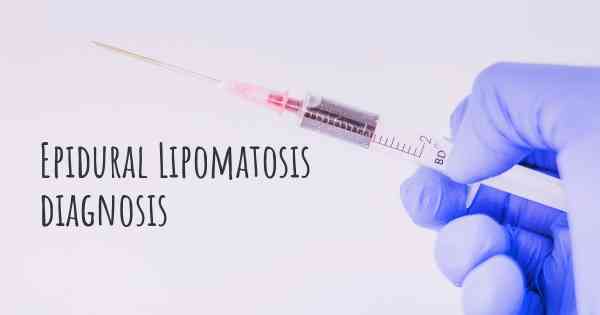4
How is Epidural Lipomatosis diagnosed?
See how Epidural Lipomatosis is diagnosed. Which specialists are essential to meet, what tests are needed and other useful information for the diagnosis of Epidural Lipomatosis

Epidural lipomatosis is a rare condition characterized by the abnormal accumulation of fat in the epidural space of the spine. This can lead to compression of the spinal cord or nerve roots, resulting in various neurological symptoms. Diagnosing epidural lipomatosis typically involves a combination of clinical evaluation, imaging studies, and sometimes additional tests.
Clinical Evaluation:
During the clinical evaluation, a healthcare professional will review the patient's medical history and symptoms. They will inquire about any back pain, neurological symptoms (such as weakness, numbness, or tingling), and any factors that may contribute to the development of epidural lipomatosis, such as obesity or the use of corticosteroid medications.
Imaging Studies:
Imaging studies play a crucial role in diagnosing epidural lipomatosis. The most commonly used imaging technique is magnetic resonance imaging (MRI). MRI provides detailed images of the spine and can clearly show the presence of excess fat in the epidural space. The images can also help determine the extent and location of the fat accumulation, as well as any compression of the spinal cord or nerve roots.
During an MRI, the patient lies on a table that slides into a large, cylindrical machine. It uses a magnetic field and radio waves to create detailed cross-sectional images of the spine. The procedure is painless and non-invasive, but it requires the patient to remain still for an extended period.
Additional Tests:
In some cases, additional tests may be necessary to confirm the diagnosis or rule out other conditions. These tests may include:
1. Myelogram: A myelogram involves injecting a contrast dye into the spinal canal, followed by a series of X-rays or a CT scan. This procedure helps visualize the spinal cord and nerve roots more clearly, allowing for a more accurate assessment of any compression or abnormalities.
2. Electromyography (EMG): EMG involves the insertion of fine needles into the muscles to measure their electrical activity. This test can help evaluate the function of the nerves and muscles and determine if there is any nerve damage or compression.
3. Biopsy: In rare cases, a biopsy may be performed to confirm the diagnosis. This involves removing a small sample of the epidural fat for examination under a microscope.
Conclusion:
In summary, diagnosing epidural lipomatosis involves a combination of clinical evaluation and imaging studies, primarily MRI. Additional tests such as myelogram, EMG, or biopsy may be performed in certain cases. It is important to consult with a healthcare professional if you experience persistent back pain or neurological symptoms to determine the underlying cause and receive appropriate treatment.
Diseasemaps








